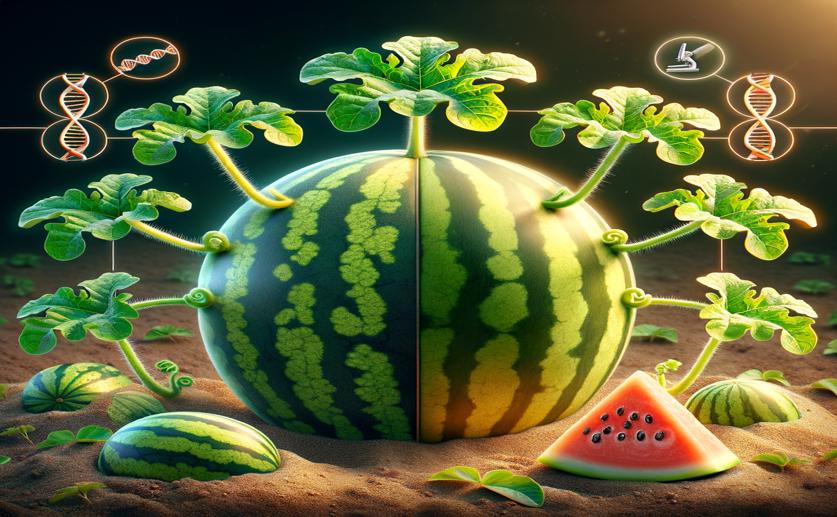
Discovering Watermelon Genetics to Resist Wilt Disease
Greg Howard
1st April, 2024

Image Source: Natural Science News, 2024
Key Findings
- Clemson University researchers found genetic markers for disease resistance in watermelons
- These markers can help breed new watermelon varieties resistant to a harmful fungal disease
- The study used a wild watermelon relative to identify the resistant genes
References
Main Study
1) Mapping and validation of Fusarium wilt race 2 resistance QTL from Citrullus amarus line USVL246-FR2.
Published 31st March, 2024
https://doi.org/10.1007/s00122-024-04595-z
Related Studies
2) A GBS-SNP-based linkage map and quantitative trait loci (QTL) associated with resistance to Fusarium oxysporum f. sp. niveum race 2 identified in Citrullus lanatus var. citroides.
3) QTL Mapping Identifies Novel Source of Resistance to Fusarium Wilt Race 1 in Citrullus amarus.
4) QTL mapping of resistance to Fusarium oxysporum f. sp. niveum race 2 and Papaya ringspot virus in Citrullus amarus.



 22nd March, 2024 | Jenn Hoskins
22nd March, 2024 | Jenn Hoskins